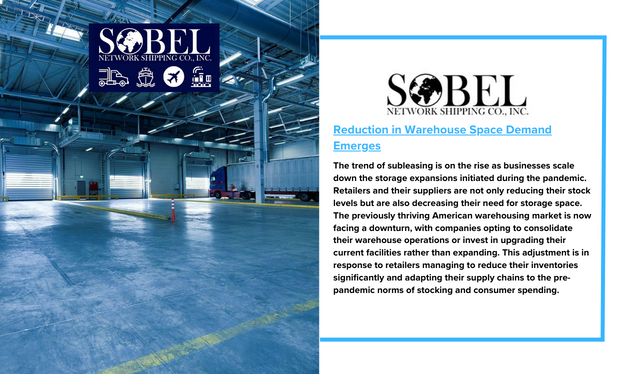The trend of subleasing is on the rise as businesses scale down the storage expansions initiated during the pandemic. Retailers and their suppliers are not only reducing their stock levels but are also decreasing their need for storage space. The previously thriving American warehousing market is now facing a downturn, with companies opting to consolidate their warehouse operations or invest in upgrading their current facilities rather than expanding. This adjustment is in response to retailers managing to reduce their inventories significantly and adapting their supply chains to the pre-pandemic norms of stocking and consumer spending.
Companies such as Newell Brands, known for its consumer goods, the retail pharmacy chain Rite Aid, and the sports apparel retailer Fanatics are among those either shutting down warehouses or enhancing their existing ones instead of opening new ones this year. Furthermore, other businesses are offloading their excess storage capacity by subleasing. The total warehouse space available for sublease in the U.S. surged to a record 156 million square feet in the last quarter of 2023, a substantial increase from the fourth quarter of 2021, as reported by Savills, a real estate services firm.
This represents a notable shift for the industrial real estate sector, which experienced a surge in demand and a drop in vacancy rates amid the pandemic due to a boom in e-commerce and retailers’ efforts to avoid supply chain disruptions by stocking up on goods.
The competitive market led to a nearly 24% increase in average warehouse rent in 2022 compared to the previous year, a significant jump from the annual increase of 6.3% in 2019, pre-pandemic, as per JLL, another real estate services firm. However, the pace of rent increases has decelerated, with a 12.5% rise in 2023 from the year before, according to JLL.
The industry is witnessing a return to the “just-in-time” inventory management approach, moving away from the pandemic-induced trend of accumulating buffer stock to counter product shortages and supply chain issues. According to Mark Russo, Savills’ head of industrial research, some businesses are now subleasing their extra space, having acquired it based on optimistic forecasts that did not materialize. This shift is attributed to a reevaluation of supply chain strategies to align with more realistic expectations of consumer spending growth.
Russo highlights that the current normalization in demand follows an extraordinarily high period, with subleased space still representing a minor fraction of the total warehouse space available. This is amidst ongoing construction of speculative developments by developers.
Many businesses are now merging their warehouse operations and moving to more modern facilities that offer greater automation capabilities and require fewer workers, explains Mehtab Randhawa, JLL’s global head of industrial research.
Newell Brands is closing a distribution center in Ohio to consolidate operations in Pennsylvania, enhancing automation and digital capabilities. Rite Aid is responding to its bankruptcy by closing stores and a warehouse in California, consolidating operations for efficiency. Similarly, Fanatics is closing an older warehouse in Florida, moving its operations to newer facilities with better technology and infrastructure to improve customer experience.
Despite the shift in demand, new warehouse projects continue, with a noticeable increase in leasing activity in the last quarter, albeit lower than the previous year’s same quarter, according to JLL.


